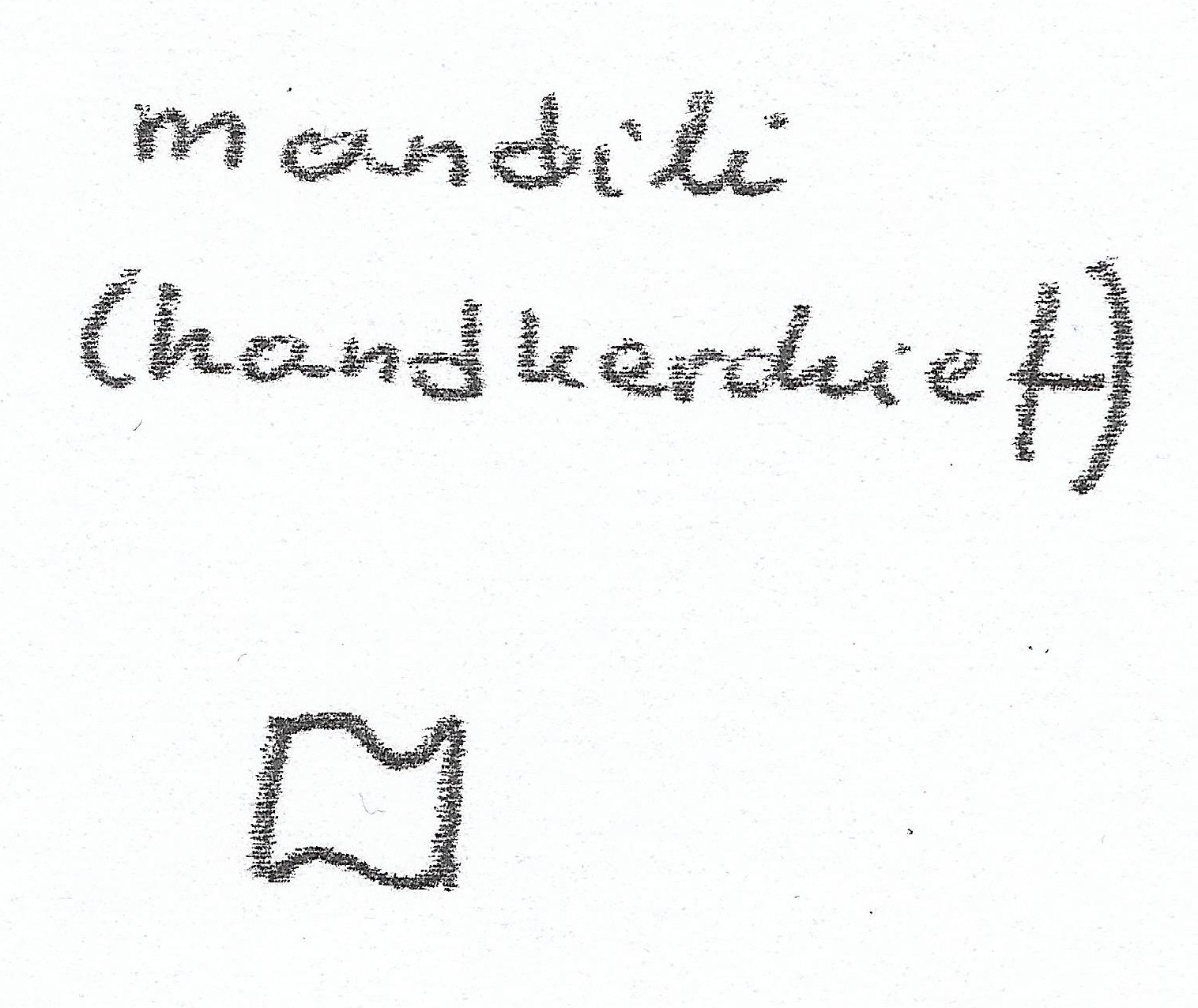| Testimony of: | kerchief |
| Source | Στράτου 1979, 39 (in EEH, sv. Κομπιάνικος, p. 307) |
| Original text | Γι' αυτόν έχουμε μια διγνωμία των κατοίκων: "χορεύεται μόνον από γυναίκες" για μερικούς, "χορεύεται από πολλές γυναίκες σε ζυγό αριθμό, με πρωτοχορευτή έναν άνδρα" για άλλους. Οπως τον είδαμε να χορεύεται μόνο με γυναίκες, που η πρώτη κρατάει δυο μεγάλα μαντήλια κι έχει έτσι την δυνατότητα να κάνει καμάρες για να περάσουν οι χορευτές, ο χορός δείχνει μια συγγένεια με τον "αρχαίο συρτό" της Ζακύνθου. Η πρώτη χορεύτρια κρατά μαντήλι σε ορισμένη φάση του χορού, και κάποτε παίρνει και το δεύτερο μαντήλι που μέχρι μια ορισμένη μουσική φράση το βαστούσε μια άλλη χορεύτρια, σχηματίζοντας έτσι δυο σειρές. Οταν δηλαδή βρίσκονται οι δυό σειρές παράλληλες, τότε η πρωτοχορεύτρια παίρνει και τα δύο μαντήλια, ένα στο κάθε της χέρι, και οδηγεί τις άλλες, υποτίθεται, για να βγούν από τον Λαβύρινθο. |
| English translation | On this, the locals disagree: some say “this dance is danced only by women”, and some that “it is danced by many women paired two by two, led by a man”. As we have seen it danced only by women, first of who was holding two big kerchiefs and was able to make arches so that the dancers could pass under them, the dance shows a continuity with the “ancient syrtos” of Zakynthos. The first female dancer holds the kerchief in a specific phase of the dance and sometimes she grabs a second, which was previously held – until a specific musical phrase – by a different female dancer, and thus she marks two series. When two series are parallel to each other, the first dancer grabs both kerchiefs: one in each of her hands, and leads the rest of dancers, symbolically, out of the labyrinth. |
| Region of occurence | Cythera - Show on map |
| Function | decorative, symbolic, |
| Dance name | Kompianikos |
| Symbol in Kinetography score |
|


